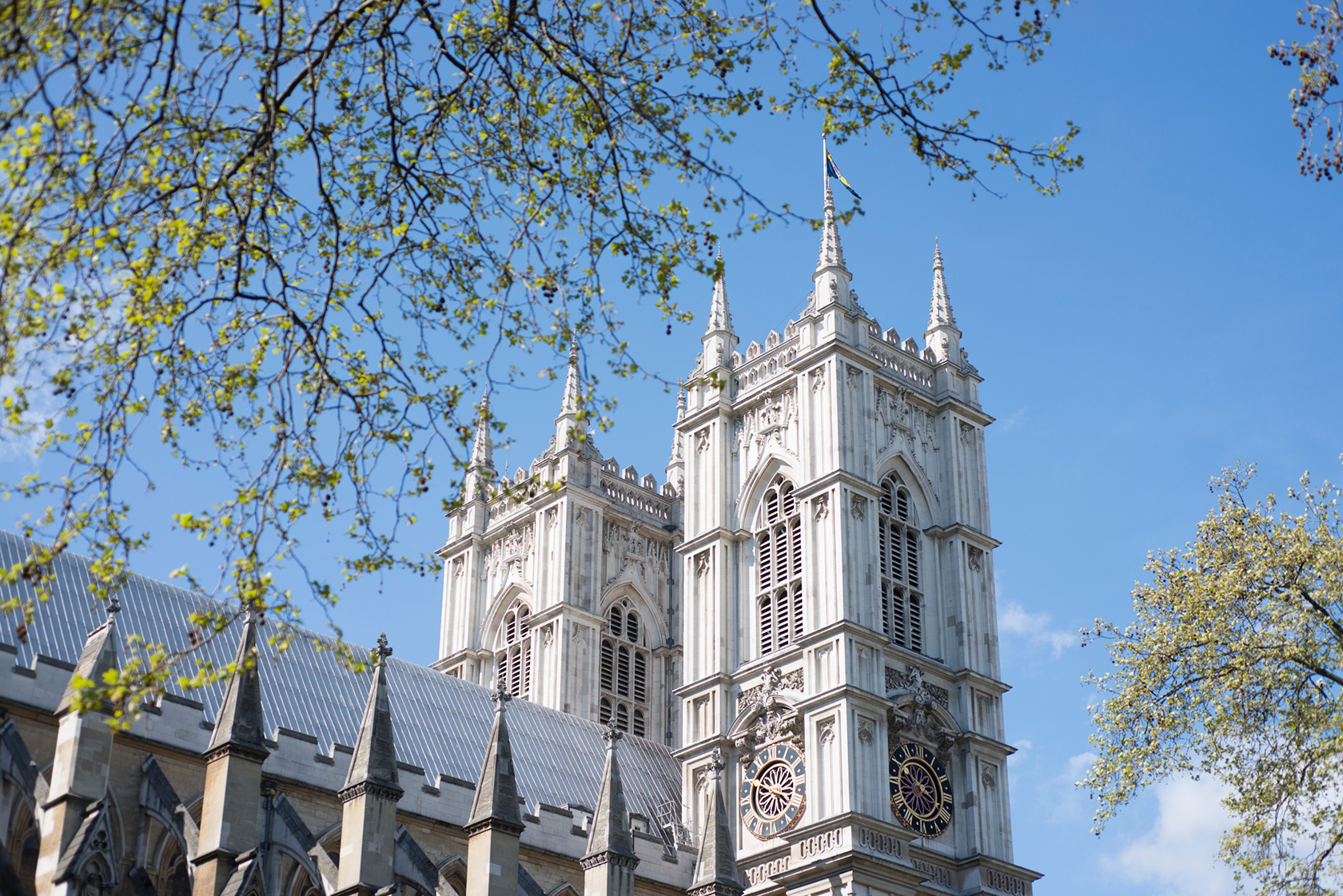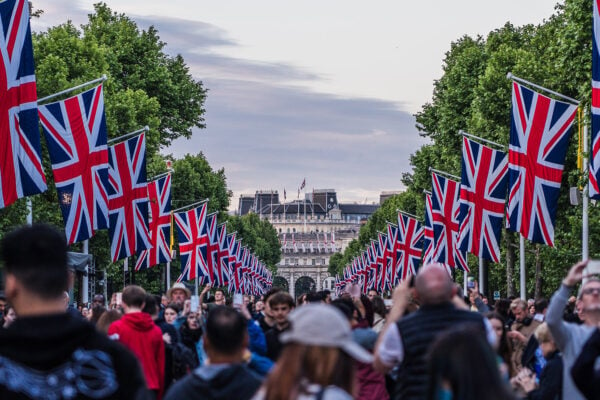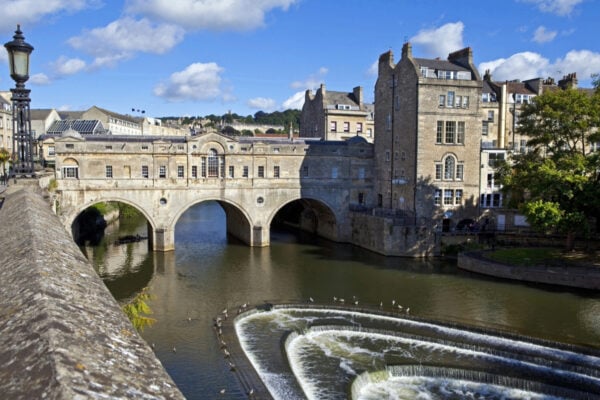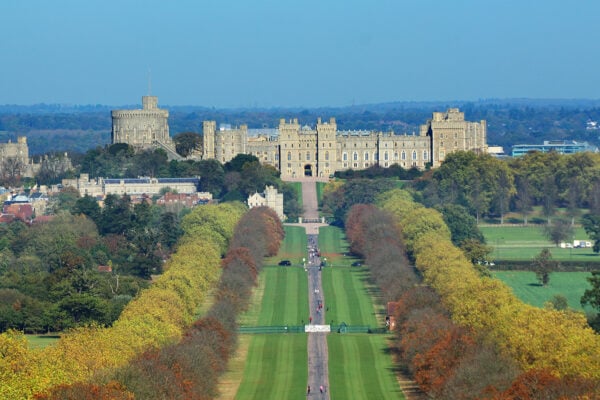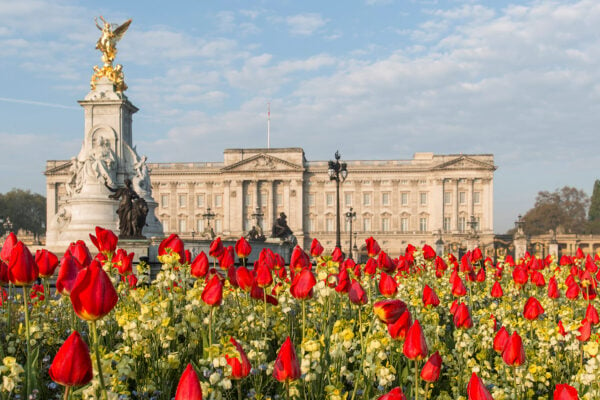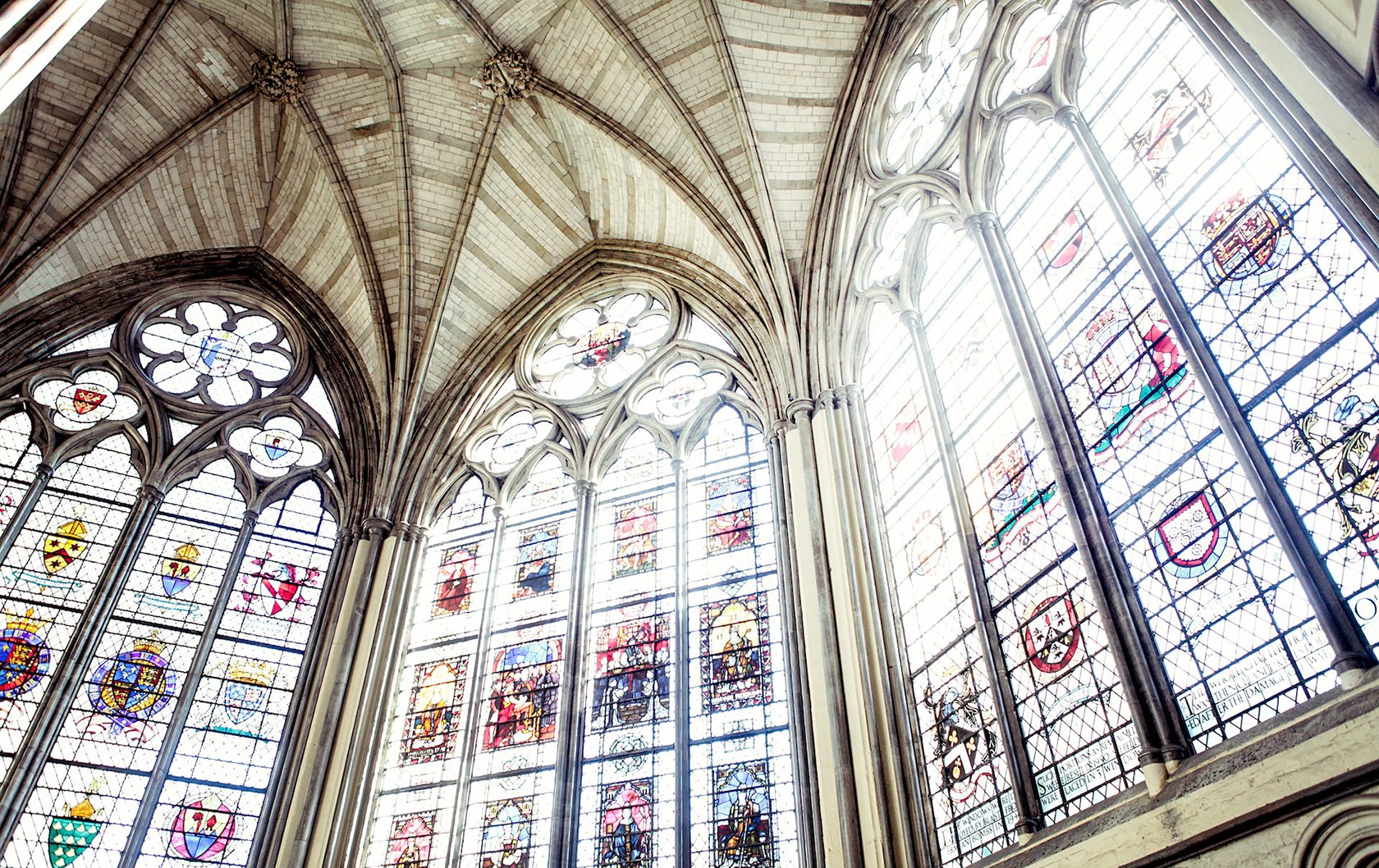
Light streams into the Chapter House at Westminster Abbey. (credit)
There is no shortage of things to see and do in London but if you had to choose the city’s most iconic sights, Westminster Abbey would undoubtedly be one of them. A UNESCO heritage site since 1987, the Abbey has stood in some form for more than a thousand years, serving as a gathering place for Benedictine monks for nearly a century before Anglo-Saxon England was conquered by the Normans. By the 13th century, King Henry III had begun the construction of the Gothic Abbey we know today, and the finished structure was distinctive enough to be granted the status of “Royal Peculiar” in 1560. While it might sound strange, the term means that Westminster Abbey is actually not governed by the Church of England but instead belongs to the ruling monarch. That’s not the only thing that changed: once it received the Royal Peculiar designation, Westminster Abbey’s official name became the Collegiate Church of St. Peter, Westminster. But don’t worry, every taxi driver you’ll meet will still call it by its rather more famous moniker.
Visiting Westminster Abbey is like walking through the incredible history of the United Kingdom, and tiny details hide in every meticulously designed corner. It’s worth taking the time to soak it all, but here are six reasons you’ll want to spend the day at one of the most famous buildings in the world.
1. It’s Coronation HQ
The coronation of a British monarch, where the ruler of the United Kingdom is formally invested with regalia and crowned, is one of the most celebrated events in history. Every single Coronation of British Monarchs has been held at Westminster Abbey since 1066, beginning with William the Conqueror. In the thousand years since, there have been thirty nine Coronation ceremonies at the Abbey, with the last being held on June 2, 1953 for Queen Elizabeth II. The ceremony is full of time honored traditions and is an extraordinary time to be in London, as the procession of the monarch will fill the streets outside of Westminster Abbey. Even if you don’t make it to the next Coronation, you can visit the Coronation Chair, which has been used for every monarch since King Edward in 1300, when you visit the Abbey.
2. It’s the Dream Wedding Venue
Though it may be the dream venue for many people, the only people allowed to get married at Westminster Abbey are members of England’s royal family, members of the Order of the Bath (and their children) or anyone who actually lives in the Abbey’s precincts. However, even if you can’t have your own big day there, the sixteen royal weddings that have taken place at Westminster Abbey since Henry I married Princess Matilda of Scotland in 1100 have always been a grand affair celebrated as much by the public as the family themselves. Queen Elizabeth II and Prince Philip’s wedding ceremony was recorded and broadcast by BBC Radio to 200 million people around the world; when her grandson Prince William married Kate Middleton in 2011, they set a new world record for the most livestreams of any single event.
3. It’s the Door to the Past (Literally!)
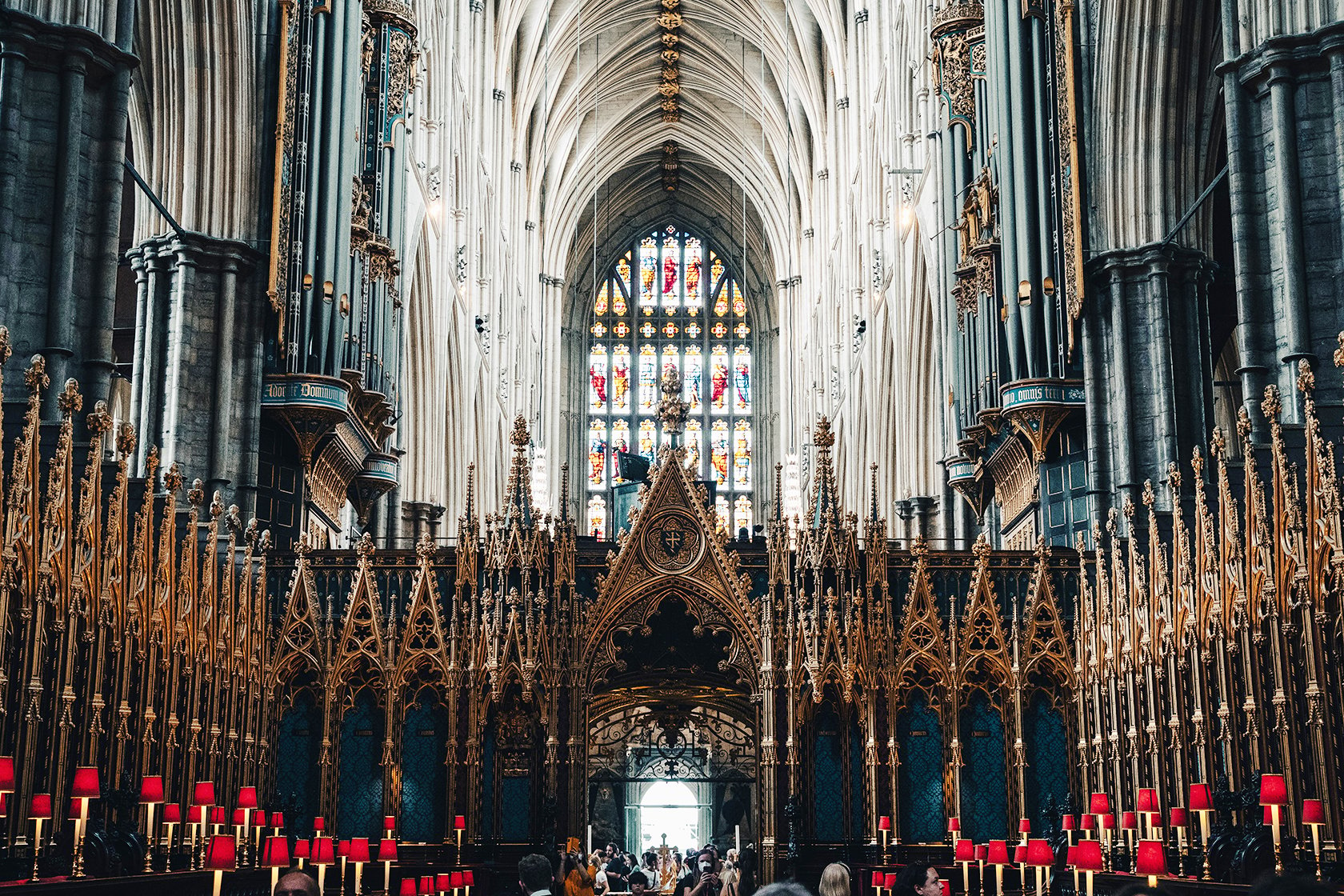
Soaring nave of Westminster Abbey. (credit)
The Gothic arches of Westminster Abbey are world famous but the more time you spend exploring, the more you’ll notice the many incredible details that make up it’s many nooks and crannies. One such is actually hiding in plain sight: the wooden door in the vestibule leading to the Chapter House at Westminster Abbey is considered the oldest door in Britain: analyses showed that the wood was felled after 1032 AD and that the door was constructed sometime in the 1050s during the reign of King Edward the Confessor. But history is everywhere in the Abbey: look for the Cosmati Pavement, which was laid in 1268 and is made of unique, detailed mosaics that aren’t found anywhere else in the world. The designs are also accompanied by three damaged inscriptions in brass that refer to the end of the world, which has attracted curious treasure hunters for centuries.
4. The One of a Kind Lady Chapel
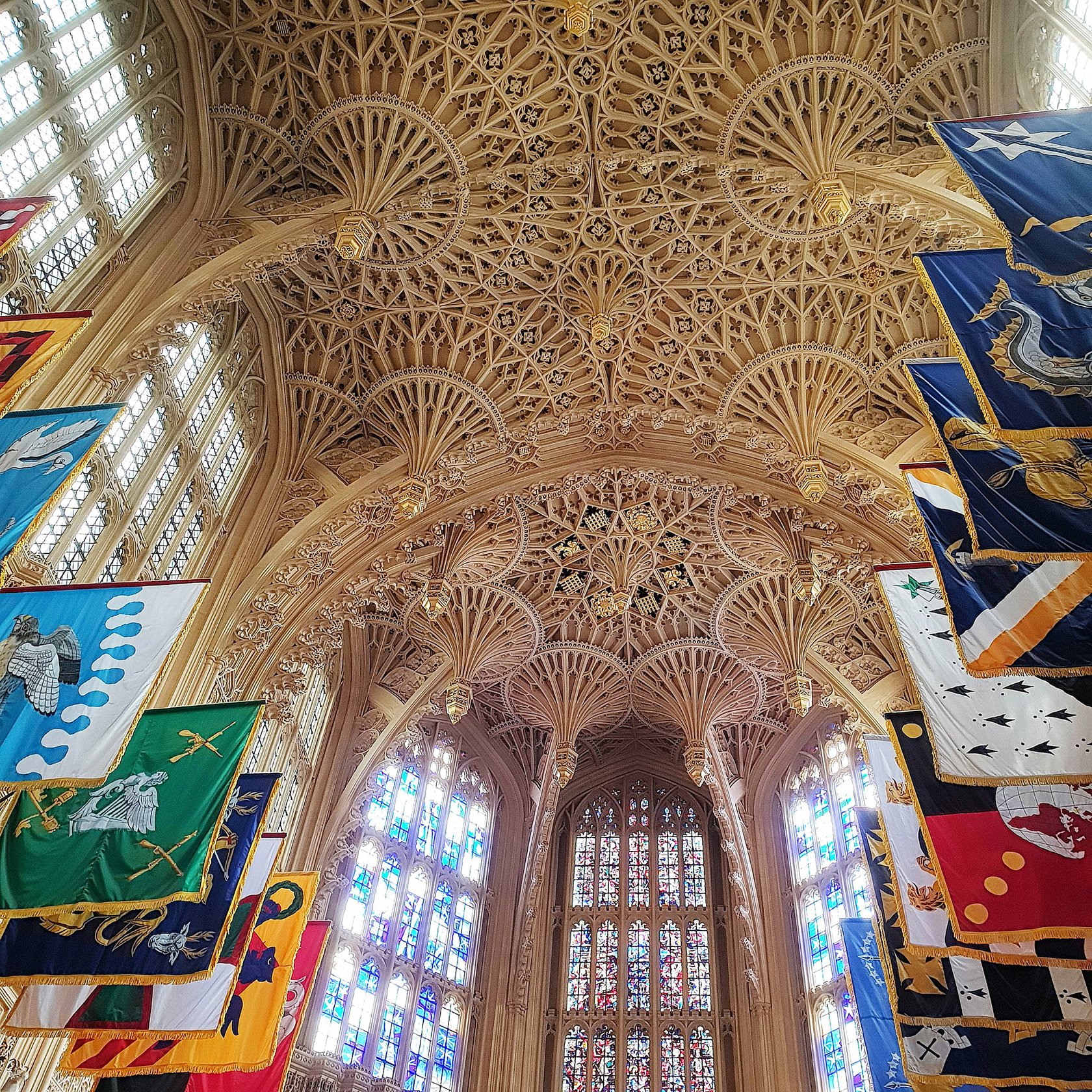
Henry VII’s Lady Chapel. (credit)
One of the most iconic viewpoints of Westminster Abbey is the Lady Chapel, commissioned by Henry VII and completed in 1516. Known as a “wonder of the world” by historians, the Lady Chapel’s fan vaulted ceiling and stained glass windows are widely considered to be the last great masterpiece of English medieval architecture. While it was ostensibly built as a shrine to the Virgin Mary, the Henry VII Chapel was actually built to honor Henry VI, who had been murdered. Begun in 1503 with the unheard of sum of £14,000, the construction took so long that by the time it was completed, it was used as the tomb of its benefactor, Henry VII. Since then, the Chapel has become the resting place for fifteen kings and queens.
5. It is the World’s Most Famous Cemetery
Apart from Kings, Queens and royals, Westminster Abbey is the burial site of the most famous names in world history, including Sir Isaac Newton, Charles Darwin and Winston Churchill. Among the more than 3,300 people, there are at least 16 monarchs, eight prime ministers, poets laureate, actors, scientists and military leaders. There are also important monuments on the floor of the Abbey in tribute to great minds like Stephen Hawking as well as a plaque honoring the Unknown Warrior, an unidentified British soldier killed on a European battlefield during the First World War. Although there are many graves on the floor of Westminster Abbey, this is the only one on which it is forbidden to walk.
6. Especially if you’re a Poet!
One of the most famous people to be interred at Westminster Abbey is Geoffrey Chaucer, whose Canterbury Tales is widely regarded as the seminal work of English literature. Chaucer was also hugely famous in his own lifetime and when the poet Edmund Spenser requested to be buried alongside him upon his own death, a tradition was founded. Since then poets, authors and other artists have been buried or commemorated at Westminster Abbey with memorials, busts, and floor stones in the Poets’ Corner, which you can visit anytime the Abbey is open. Look for Rudyard Kipling, Thomas Hardy, Charles Dickens, the Bronte sisters, Jane Austen and William Shakespeare, all of whom are honored within the walls of this historic setting.
Visit the Westminster Abbey website to find out more about opening hours and tickets.
